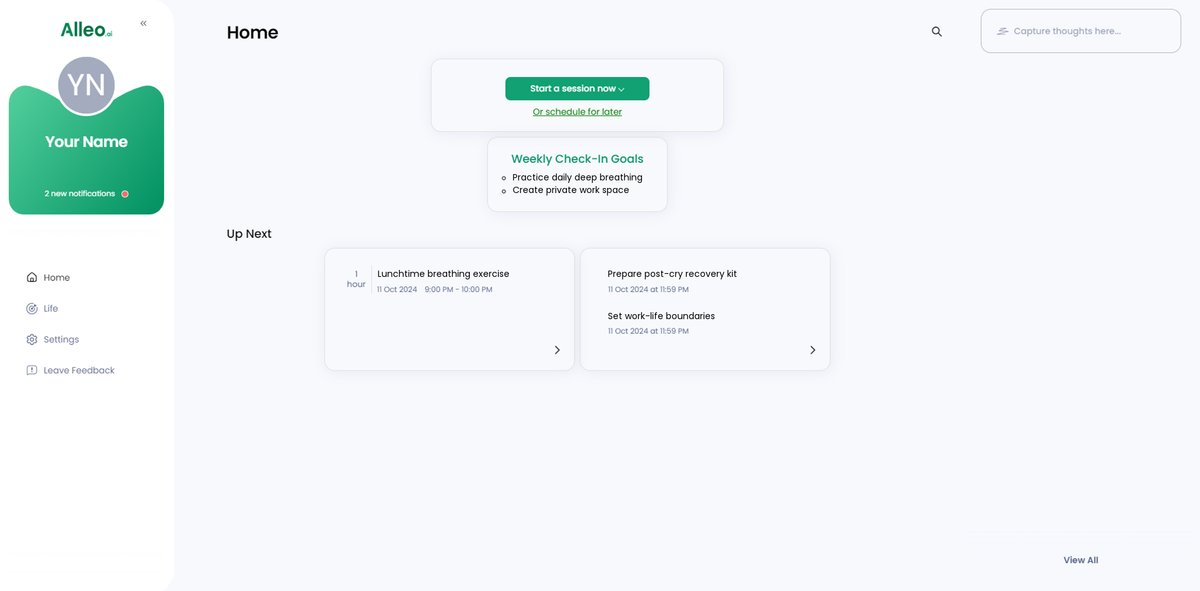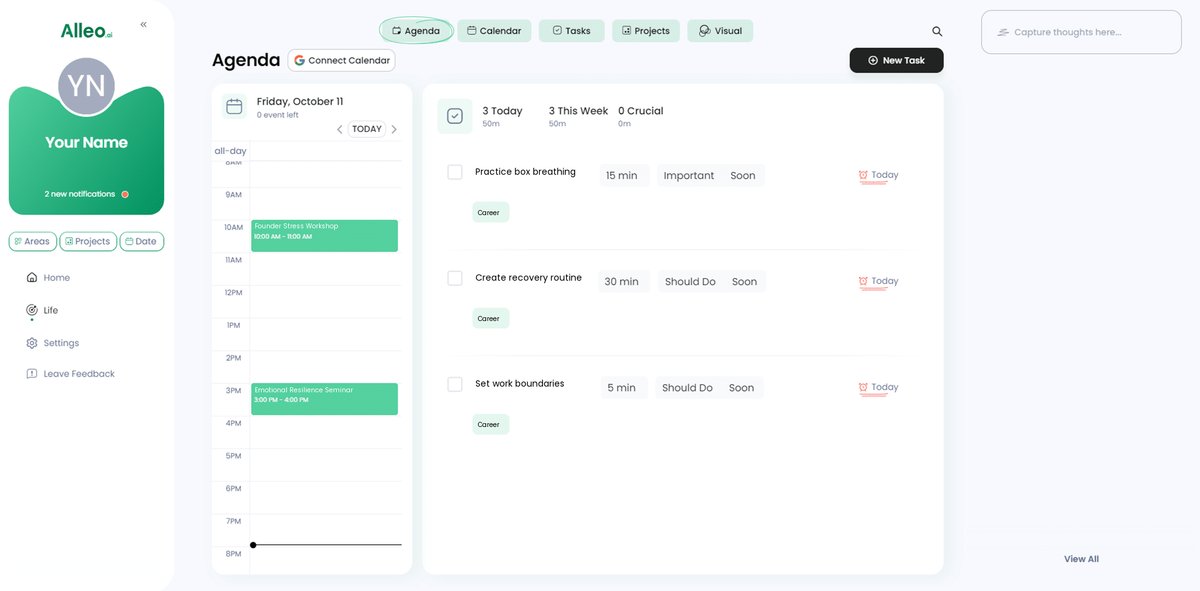How to Handle Crying at Work: 6 Proven Methods for Stressed Professionals
Have you ever felt the overwhelming urge to cry during a high-pressure meeting? Managing workplace emotions effectively can be challenging, especially in stressful situations.
As a life coach, I’ve helped many professionals navigate these challenges. In my experience, dealing with emotional responses at work is crucial for maintaining professionalism and developing emotional intelligence in the workplace.
In this article, you’ll discover practical strategies to handle crying at work and manage workplace emotions effectively. We’ll cover deep breathing techniques, creating private spaces, and setting boundaries, among other tips for workplace stress management and emotional regulation techniques.
Let’s dive into these professional coping strategies and work-life balance tips.

The Emotional Toll of Startup Life
Crying at work is more common than you might think. In fact, many professionals have experienced it at some point in their careers, highlighting the importance of managing workplace emotions effectively.
For startup founders, the stakes are even higher. Long hours, personal investment, and the pressure to succeed create a perfect storm for emotional breakdowns and work-related anxiety.
Unmanaged emotional responses can derail productivity and strain work relationships. It’s not just about the tears; it’s about the underlying stress that causes them, emphasizing the need for workplace stress management and emotional regulation techniques.
I’ve seen clients struggle with this frequently. Their emotional stress affects their well-being and work performance deeply, underscoring the importance of professional coping strategies and mental health in the office.

Key Steps to Manage Emotional Responses at Work
Managing workplace emotions effectively requires a few key steps. Here are the main areas to focus on to make progress in workplace stress management.
- Practice Deep Breathing Techniques for Calm: Use structured breathing exercises to stay centered and employ mindfulness for professionals.
- Create a Private Space for Emotional Moments: Find a quiet, personal area at work for emotional breaks, aiding in emotional regulation techniques.
- Develop a Post-Cry Recovery Routine: Establish habits to quickly recover and refocus after crying, improving professional coping strategies.
- Reframe Crying as a Natural Stress Response: Understand and normalize crying as a healthy emotional release, enhancing emotional intelligence in the workplace.
- Establish Boundaries to Manage Work Pressure: Set clear limits to balance work and personal life, contributing to career burnout prevention.
- Seek Peer Support from Fellow Founders: Connect with other founders for shared experiences and support in dealing with work-related anxiety.
Let’s dive into these strategies for managing workplace emotions effectively!
1: Practice deep breathing techniques for calm
Deep breathing can help manage workplace emotions effectively and keep you composed during challenging moments. It’s a key technique for workplace stress management.
Actionable Steps:
- Practice box breathing: Inhale for 4 seconds, hold for 4 seconds, exhale for 4 seconds, and hold for 4 seconds. This is an excellent emotional regulation technique for professionals.
- Schedule short, regular breaks throughout the day to practice deep breathing, especially before high-stress meetings. This is crucial for managing workplace emotions effectively.
- Use a breathing app or guided meditation to maintain consistency and track progress. These tools can aid in work-life balance and prevent career burnout.
Explanation:
These steps are essential because they provide a quick and effective way to reduce stress and improve emotional intelligence in the workplace.
Practicing deep breathing can significantly lower your stress levels, helping you stay focused and calm. It’s one of the most effective professional coping strategies for dealing with work-related anxiety.
According to Cleveland Clinic, even dedicating 5 to 15 minutes a few times a day to relax can significantly reduce stress levels. This aligns with mindfulness for professionals and stress relief exercises for office workers.
Taking these steps can help you stay composed and improve your overall well-being, contributing to better mental health in the office.

2: Create a private space for emotional moments
Having a private space at work is vital for managing workplace emotions effectively.
Actionable Steps:
- Identify a quiet, private space at work where you can retreat if you need a moment to compose yourself and practice emotional regulation techniques.
- Communicate with your team about the importance of having a personal space for emotional health without disclosing specific personal details, promoting emotional intelligence in the workplace.
- Personalize the space with calming elements such as plants, soft lighting, or soothing music to aid in workplace stress management.
Explanation:
These steps matter because having a designated private space can help you regain composure quickly. It ensures you have a safe environment to manage workplace emotions effectively without professional repercussions.
According to Fortune, setting boundaries and creating personal spaces can significantly improve emotional resilience and work performance, contributing to career burnout prevention.
This approach allows you to maintain professionalism while addressing your emotional needs, supporting work-life balance and professional coping strategies.

3: Develop a post-cry recovery routine
Creating a recovery routine can help you quickly bounce back after an emotional moment at work, which is crucial for managing workplace emotions effectively.
Actionable Steps:
- Keep a recovery kit at your desk with items like tissues, water, and a small mirror to freshen up, aiding in workplace stress management.
- Establish a quick routine: wash your face, take a few deep breaths, and reapply any makeup if needed, incorporating emotional regulation techniques.
- Use positive affirmations or a quick gratitude journal to shift your mindset back to a positive outlook, enhancing emotional intelligence in the workplace.
Explanation:
These steps are essential to regain composure and maintain professionalism. Keeping a recovery kit ensures you’re prepared for unexpected emotional moments, supporting professional coping strategies.
Establishing a quick routine helps you reset and refocus, while positive affirmations boost your mental state. According to Wondermind, leaning on simple self-care practices can make a significant difference in managing workplace stress and promoting mental health in the office.
Following these steps can help you stay resilient and keep your work performance on track, effectively managing workplace emotions and preventing career burnout.
4: Reframe crying as a natural stress response
Understanding that crying is a natural response to stress can help you in managing workplace emotions effectively.
Actionable Steps:
- Educate yourself on the physiological benefits of crying. Research how it helps reduce stress and release emotions, aiding in workplace stress management.
- Normalize the experience by reminding yourself and others that crying is a healthy and natural reaction to stress, promoting emotional intelligence in the workplace.
- Practice self-compassion by acknowledging your emotions and treating yourself with kindness during these moments, which is crucial for dealing with work-related anxiety.
Key benefits of reframing crying:
- Reduces stigma and shame
- Promotes emotional honesty
- Enhances overall well-being and work-life balance
Explanation:
These steps matter because accepting crying as a natural response can reduce the stigma around it. It encourages a healthier emotional environment at work, supporting mental health in the office.
According to Make Work More Human, collective practices help process stress and improve well-being. Embracing this mindset can lead to a more supportive workplace and aid in career burnout prevention.
Reframing crying this way empowers you to handle your emotions with grace and resilience, which is essential for managing workplace emotions effectively and developing professional coping strategies.

5: Establish boundaries to manage work pressure
Establishing boundaries is vital for managing workplace emotions effectively and controlling work pressure while maintaining your emotional health.
Actionable Steps:
- Define clear work hours and stick to them, ensuring time for rest and personal activities, which is crucial for work-life balance.
- Learn to say no to additional tasks that could overload your schedule and delegate when possible, a key strategy for workplace stress management.
- Prioritize tasks based on urgency and importance, using tools like the Eisenhower Matrix, to improve professional coping strategies.
Explanation:
These steps matter because they help you balance your professional and personal life, reducing stress. Setting boundaries ensures you have time to recharge and stay productive, which is essential for managing workplace emotions effectively.
According to Wondermind, establishing boundaries and prioritizing mental health in the office can significantly boost emotional resilience and work performance.
Effective boundary-setting strategies for dealing with work-related anxiety:
- Communicate expectations clearly
- Consistently enforce your limits
- Regularly reassess and adjust as needed
Balancing work and personal life empowers you to handle work pressure more effectively, contributing to career burnout prevention and overall emotional intelligence in the workplace.
6: Seek peer support from fellow founders
Connecting with peers who understand your unique challenges is invaluable for managing workplace emotions effectively and stress management.
Actionable Steps:
- Join a support group: Find or create a group of fellow startup founders to share experiences and advice on workplace stress management.
- Schedule regular check-ins: Set up monthly meetings with a mentor or trusted colleague to discuss challenges and gain perspective on professional coping strategies.
- Attend industry events: Participate in workshops or events focused on managing workplace emotions effectively and emotional resilience.
Explanation:
These steps matter because they provide a structured support network, helping you feel less isolated. Connecting with peers who face similar pressures can offer practical advice and emotional relief, aiding in career burnout prevention.
According to Wondermind, leaning on a support system can significantly enhance emotional intelligence in the workplace and work performance.
Benefits of peer support for founders:
- Shared problem-solving experiences for dealing with work-related anxiety
- Emotional validation and understanding to improve mental health in the office
- Access to diverse perspectives and resources for work-life balance tips
Building these connections empowers you to handle stress more effectively and practice emotional regulation techniques.

Partner with Alleo for Stress Management
We’ve explored how to handle crying at work and manage workplace emotions effectively. Did you know you can work with Alleo to make this process of workplace stress management easier?
Alleo, your AI life coach, offers tailored support for stress management and developing emotional intelligence in the workplace. Set up an account and create a personalized plan for dealing with work-related anxiety.
Alleo will help you set goals, track progress, and stay accountable with professional coping strategies.
With a free 14-day trial, it’s easy to get started on your journey to managing workplace emotions effectively. Ready to take control of your emotional health and prevent career burnout?
Let me show you how to incorporate mindfulness for professionals into your daily routine!
Step 1: Log in or Create Your Account
To start managing your workplace stress with AI support, Log in to your account or create a new one to begin your journey towards better emotional control at work.

Step 2: Choose Your Focus Area
Select “Improving overall well-being and life satisfaction” as your goal in Alleo to address workplace stress and emotional management, helping you build resilience and maintain professionalism in challenging situations.

Step 3: Select “Career” as Your Focus Area
Choose “Career” as your focus area in Alleo to address workplace stress and emotional management, aligning perfectly with the challenges of crying at work and maintaining professionalism in high-pressure startup environments.

Step 4: Starting a coaching session
Begin your journey with Alleo by scheduling an initial intake session, where you’ll discuss your emotional challenges at work and create a personalized plan to manage stress and crying effectively.

Step 5: Viewing and managing goals after the session
After your coaching session on managing workplace stress, check your Alleo app’s home page to view and manage the personalized goals you discussed, helping you stay on track with your emotional resilience strategies.

Step 6: Adding events to your calendar or app
Use Alleo’s calendar and task features to schedule and track your stress management activities, such as deep breathing sessions, peer support meetings, and personal time for emotional recovery, helping you stay accountable and measure your progress in managing workplace emotions.

Wrapping Up: Mastering Emotional Responses at Work
We’ve covered a lot of ground on managing workplace emotions effectively, particularly handling crying at work. It’s normal and manageable.
Remember, deep breathing and private spaces can help you stay calm and practice workplace stress management. Post-cry routines and reframing crying as natural are key emotional regulation techniques.
Establishing boundaries and seeking peer support are also essential professional coping strategies. These steps will help you maintain professionalism and well-being, contributing to better mental health in the office.
I understand how challenging this can be. Fortunately, you’re not alone in dealing with work-related anxiety.
Alleo can support you on this journey of managing workplace emotions effectively. Try the free 14-day trial and take control of your emotional health today, improving your work-life balance.
You’ve got this! Embrace these strategies for managing workplace emotions effectively and see the positive change in your emotional intelligence in the workplace.